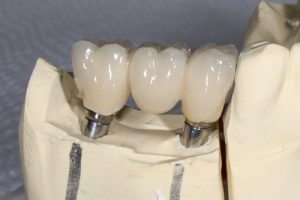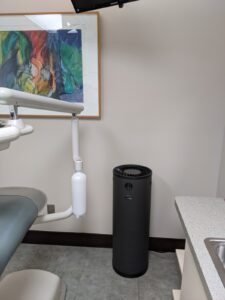 In addition to replacing a single tooth, we can use dental implants to secure a prosthetic, addressing more substantial tooth loss in the process. The form of prosthetic we recommend will depend on the severity of your tooth loss. Do you need a bridge or partial to restore your smile to full function and health? What’s the difference between these two options?
In addition to replacing a single tooth, we can use dental implants to secure a prosthetic, addressing more substantial tooth loss in the process. The form of prosthetic we recommend will depend on the severity of your tooth loss. Do you need a bridge or partial to restore your smile to full function and health? What’s the difference between these two options?
How Implants Preserve Smiles
When you lose a tooth, the body takes notice of the missing tooth root. Without a root, the body stops sending regular doses of calcium and phosphorus to the jawbone. With these nutrients, the jawbone will begin to dissolve, leading to further tooth loss and an aged appearance due to facial collapse. However, since dental implants are recognized by the body as natural roots, the body resumes the flow of nutrients, preserving the patient’s facial structure.
Implant Bridges
A bridge can be used to replace one to three teeth in a row. In the past, they relied on crowns to anchor them in place. This meant preparing the remaining natural teeth on either side of the gap by removing tooth structure. Since we can now retain bridges with implants, we don’t need to remove structure from your remaining natural teeth. In addition, the bridge can last a lifetime while the traditional crown-retained versions required replacement about every 10 to 15 years.
Implant Partials
A partial is designed to replace multiple missing teeth spread out across an arch. Typically, they are removable and held in place with metal clasps that attach to the natural teeth. Since ours can be retained with implants, they stimulate jawbone growth, remain fixed in place (no worries about slippage), and can last substantially longer. If you have any questions about our tooth replacement options, then please contact our office today.




Recent Comments